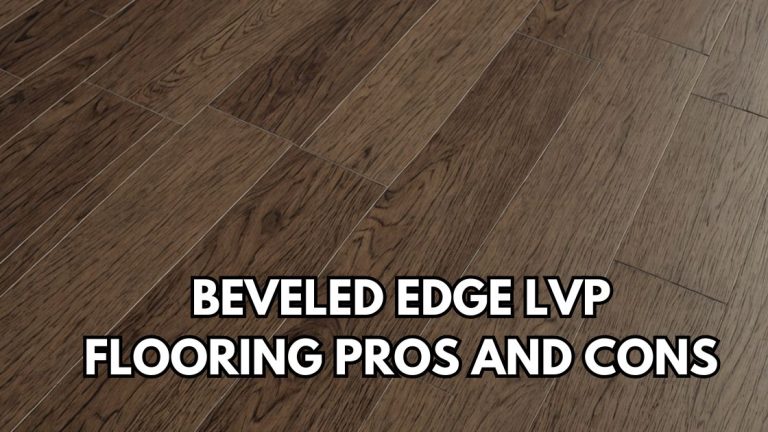Pros and Cons of Wood Flooring: A Comprehensive Guide
Wood flooring has remained a classic choice for homeowners, offering a natural beauty and warmth that few other materials can match. However, as with any type of flooring, there are specific pros and cons of wood flooring that can make it suitable or unsuitable depending on individual needs and circumstances. This article explores the benefits and drawbacks of wood flooring, helping you decide if it’s the right option for your home.
Wood Flooring
When considering the pros and cons of wood flooring, it’s essential to understand that wood floors come in various types, each offering a unique aesthetic, durability, and maintenance level. Wood flooring, often referred to as hardwood or engineered wood flooring, brings an organic charm to interior spaces. However, it’s not without its downsides, especially in terms of cost and sensitivity to moisture. This guide delves into the advantages and disadvantages of wood flooring, helping homeowners make an informed decision.
Advantages of Wood Flooring
Wood flooring offers many benefits that make it a popular choice among homeowners. Below is an overview of the key advantages of choosing wood flooring:
- Aesthetic Appeal and Timeless Elegance
Wood floors are known for their beauty and timeless charm. They add a warmth and sophistication that complements nearly every style of interior decor. Over time, wood flooring develops a unique patina, giving it character and a sense of history. - Durability and Longevity
With proper maintenance, wood flooring can last for decades or even a century. Solid hardwood can be sanded and refinished multiple times, restoring its appearance and increasing its lifespan. - Adds Value to the Home
One of the top benefits of wood flooring is its impact on property value. Potential buyers often view wood floors as a high-quality, desirable feature, which can increase the resale value of a home. - Hypoallergenic Properties
Wood flooring does not trap dust, pollen, and allergens, making it an excellent choice for those with allergies or asthma. Unlike carpet, which can harbor allergens, wood flooring contributes to cleaner indoor air quality. - Easy to Clean and Maintain
Routine cleaning for wood floors typically involves sweeping, vacuuming, or damp mopping. They require minimal effort to keep looking fresh and free from dust and dirt. - Eco-Friendly Option
When sourced sustainably, wood flooring is an environmentally responsible option. Many manufacturers adhere to eco-friendly practices, offering certified wood from responsibly managed forests.
Disadvantages of Wood Flooring
While wood flooring boasts several advantages, it also has some drawbacks to consider. Here are some of the main cons of wood flooring:
- High Initial Cost
Wood flooring, especially solid hardwood, is one of the more expensive flooring options. Installation costs can also be high, depending on the type of wood and installation complexity. - Sensitivity to Moisture and Humidity
Wood is susceptible to water damage and can warp or swell in high-humidity environments. Bathrooms, basements, and kitchens may not be the best locations for wood floors, as they are prone to spills and moisture. - Requires Regular Maintenance
While durable, wood flooring can scratch and dent over time. To keep it looking its best, homeowners may need to refinish their floors periodically, which can be both time-consuming and costly. - Can Be Noisy
Wood floors tend to amplify sound, creating noise when walked upon. Adding area rugs or investing in underlayment can help dampen noise, but it’s an additional consideration. - Limited Design Flexibility in High-Traffic Areas
In busy households or commercial settings, wood floors may not hold up as well under constant wear and tear, leading to frequent repairs or refinishing.
Types of Wood Flooring and Their Features
Solid Hardwood
Solid hardwood floors consist of a single piece of wood and offer excellent durability. They can be sanded and refinished multiple times but are more vulnerable to moisture.
Engineered Wood
Engineered wood is made of multiple layers, with a top layer of real wood. It’s more stable in humid conditions and less likely to warp, making it suitable for basements and kitchens.
Laminate Wood Flooring
While not made of solid wood, laminate mimics the appearance of wood at a lower price. It’s also more resistant to scratches and dents, although it cannot be refinished like real wood.
Pros and Cons of Wood Flooring:
| Pros of Wood Flooring | Cons of Wood Flooring |
|---|---|
| Timeless aesthetic appeal | High initial cost |
| Durable and long-lasting | Sensitive to moisture and humidity |
| Adds value to the property | Requires regular maintenance |
| Hypoallergenic and easy to clean | Can be noisy |
| Eco-friendly (if sustainably sourced) | Limited design flexibility in high-traffic areas |
Key Considerations Before Choosing Wood Flooring
- Location
Wood flooring is best suited for rooms with low humidity and limited water exposure. Avoid placing it in bathrooms or basements unless you opt for engineered wood flooring. - Budget
Consider both the initial cost of materials and installation and the potential long-term maintenance expenses. If budget is a concern, engineered wood or laminate may offer a more affordable solution. - Lifestyle and Usage
Homes with children, pets, or heavy foot traffic may see more wear and tear on wood floors. Understanding the level of durability required can help in choosing between solid wood, engineered wood, and laminate. - Environmental Impact
Opt for sustainably sourced wood to minimize environmental impact. Look for certification labels like FSC (Forest Stewardship Council) or PEFC (Programme for the Endorsement of Forest Certification).
Is Wood Flooring Right for You?
Considering the pros and cons of wood flooring, it is clear that wood floors are a beautiful, durable, and eco-friendly option for many homeowners. However, they come with a high initial cost, require periodic maintenance, and are sensitive to moisture, which may limit their suitability in certain rooms. By carefully evaluating factors like budget, lifestyle, and room environment, you can determine if wood flooring aligns with your needs and preferences.
Ultimately, the pros and cons of wood flooring underscore its suitability for those who appreciate its classic appeal and are willing to invest in long-term maintenance. With this guide, you can now make a more informed decision, ensuring that your choice of flooring meets both aesthetic desires and practical requirements.








